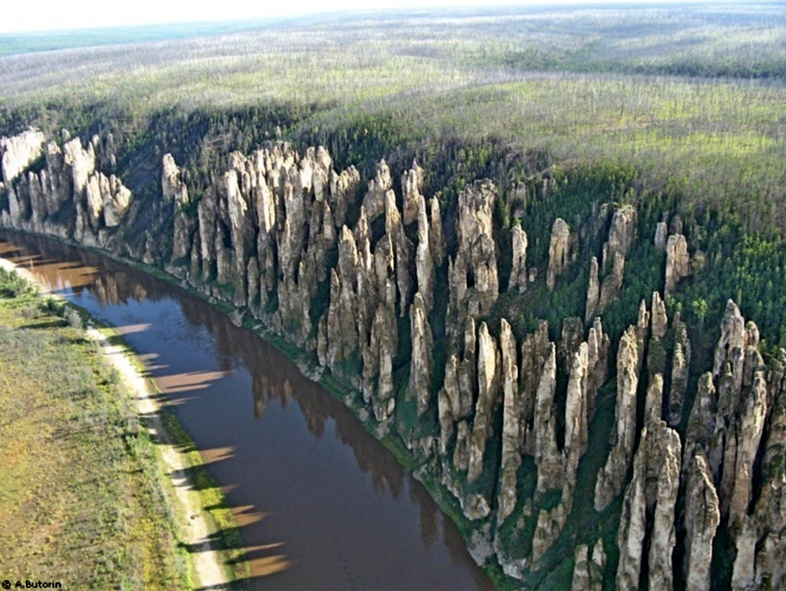
The pillars are up to 300 meters high and the area is an important archaeological site, with loads of Cambrian fossils and ancient human rock paintings.
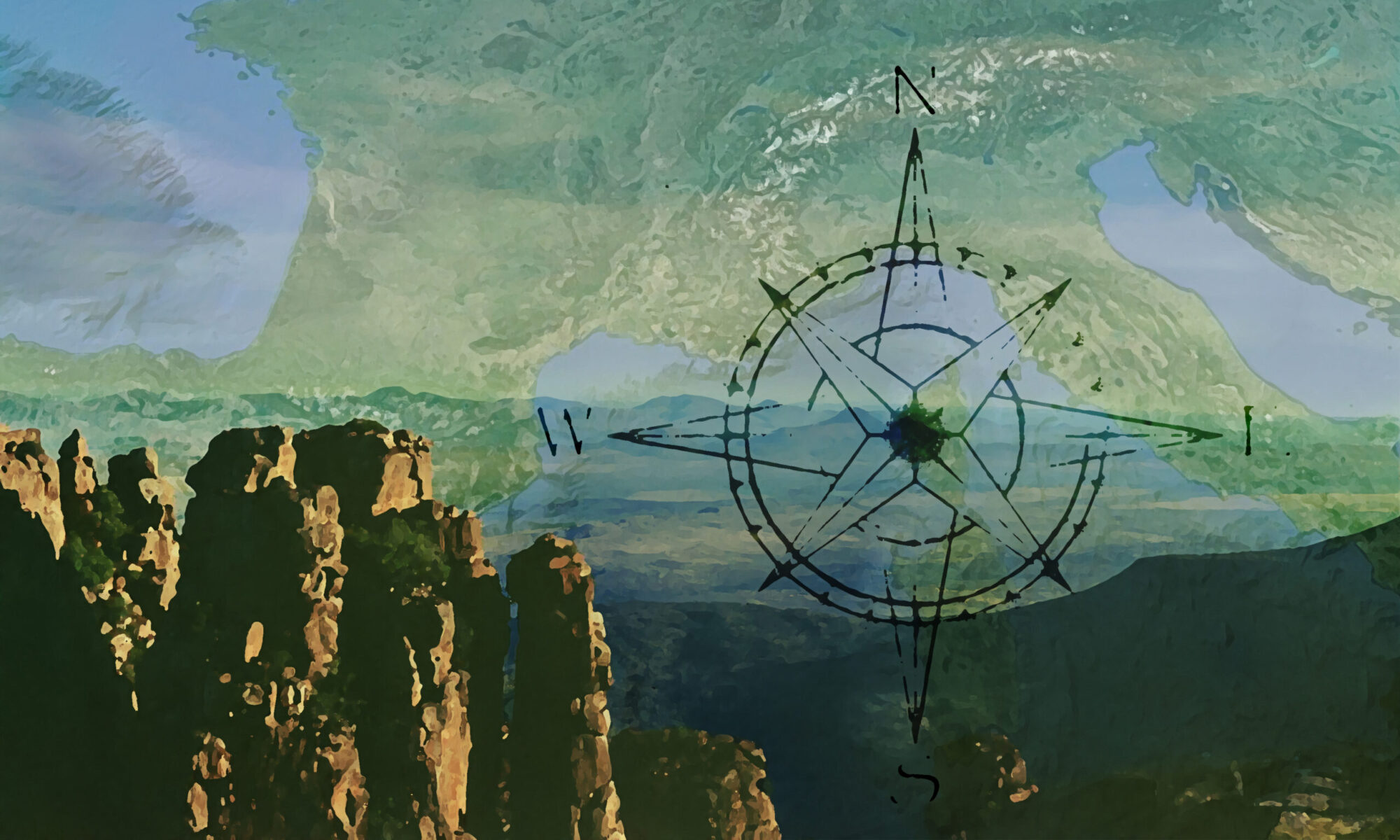
Travel & Tourist Maps, Utilities and Curiosities from the World

The pillars are up to 300 meters high and the area is an important archaeological site, with loads of Cambrian fossils and ancient human rock paintings.
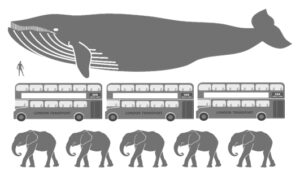 The blue whale name comes from the underwater colour, although his body is actually grayish-blue.
The blue whale name comes from the underwater colour, although his body is actually grayish-blue.
His diet mainly consists of krill, small crustaceans of which a blue whale can eat up to 4 tons every day (about two million of them!).
According to recent scientific studies, the life expectancy of a blue whale is up to 70-90 years and can be determined by the layers of their earwax.
World’s best places for blue whale watching:
Canada
Saguenay Fjord
from June to October
Iceland
Hùsavìk
from May to August
Azores
Pico Island
April, May
U.S.A.
Monterey Bay, California
San Diego, California
from June to October
Mexico
Baja California Sur
from January to March
Sri Lanka
Mirissa
from December to April
Trincomalee
from March to August
Chile
Corcovado Gulf
from January to April
Australia
Perth Canyon
from March to May
New Zealand
Kaikoura
July, August
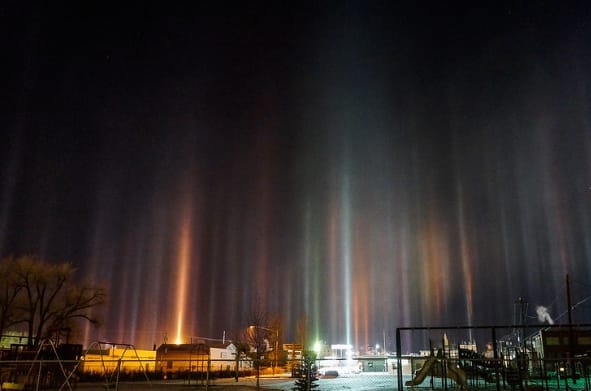
Light pillars are beams of light formed by an optical phenomenon created by the reflection of light from flat hexagonal ice crystals horizontally suspended in the atmosphere.
Different shape and colour depend on the source of light, which can be natural (sun, moon) or artificial (streetlights), on the position of the crystals: the higher they are, the taller the pillars are, and on the number and dimensions of the crystals: the larger and more numerous they are, the more pronounced is the effect.
Due to the low temperature required, this effect is typical of arctic regions.
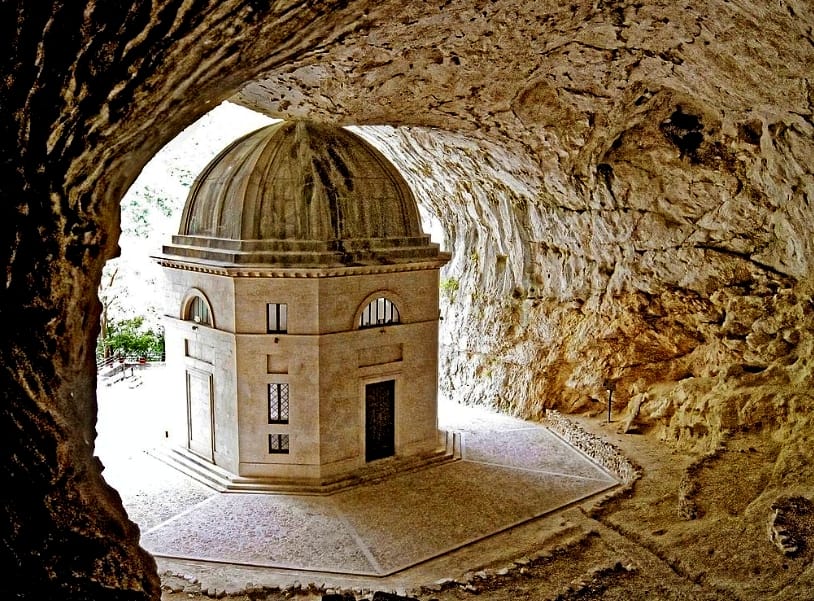
Located in the central Italian region of Marche, about one hour drive west of the city of Ancona, this gorgeous temple designed by the Italian architect Giuseppe Valadier in 1828 was originally a refugee for Christian pilgrims.
The temple is at the entrance of the Frasassi caves complex, whose Abisso Ancona is one of the biggest cave chambers in the world, 180 meters long and 200 meters tall, enough to accommodate the Milan Cathedral.
Beside the temple stands the Sanctuary of Santa Maria Infra Saxa, built in 1029 and completely carved into the rock.
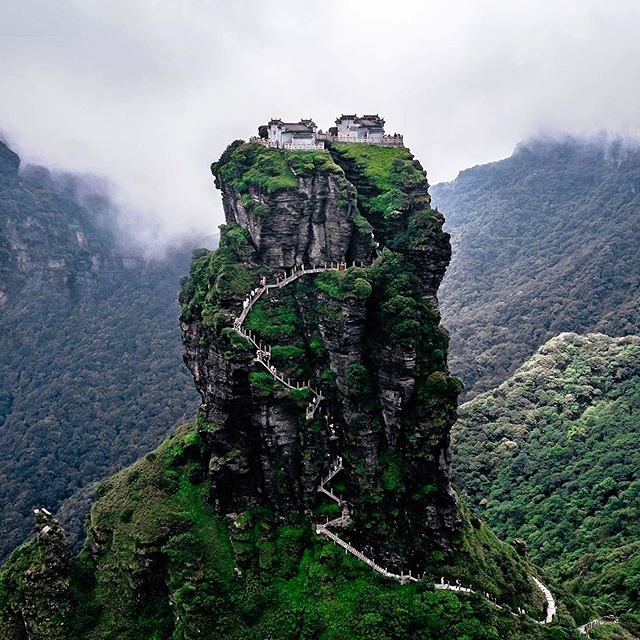
The UNESCO World Heritage site of Fanjingshan, also known as Mount Fanjing is a stunning mountain area located in the Wuling Mountains, in the Guizhou province of China.
The mountain site is formed by three peaks: the Mushroom Rock (2.318 m), the Old Golden Peak (2.474 m) and the spectacular Red Cloud Golden Peak (2.336 m) on whose top, onto a 100 meters high rock pinnacle, the Mile Temple and the Shijia Temple are connected by a bridge above the rift that splits the peak into two parts. Visitors can reach the two temples by the whole walking trail (8.888 steps, 5-6 hours), or by cable car and a shorter trail of about 2.300 steps.
Fanjingshan is a sacred Buddhist mountain, a pilgrimage destination for thousands of worshipers every year.
The whole Wuling Mountains area has plentiful biodiversity with more than two thousand species of plants and endemic endangered animals like the grey snub-nosed monkey, the Chinese giant salamander and the forest musk deer.
Mount Fanjing can be reached from the city of Tongren by a two hours bus drive and the best period to visit it is from March to November.
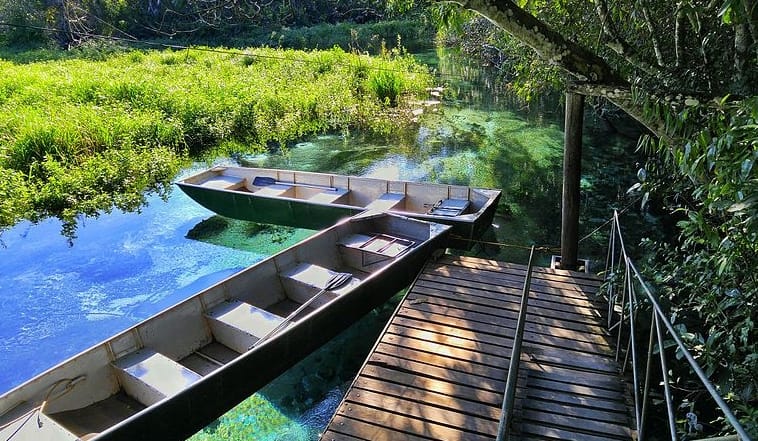
The area surrounding the municipality of Bonito is one of the best natural attractions in the state of Mato Grosso do Sul, in the South-Western part of Brazil.
One of the best sightseeing from Bonito is the Rio da Prata and Rio Sucuri / Rio Formoso, where floating guided tours allows to snorkel and dive into the crystal-clear water: a unique scenery created by the water flowing onto the limestone rocks.
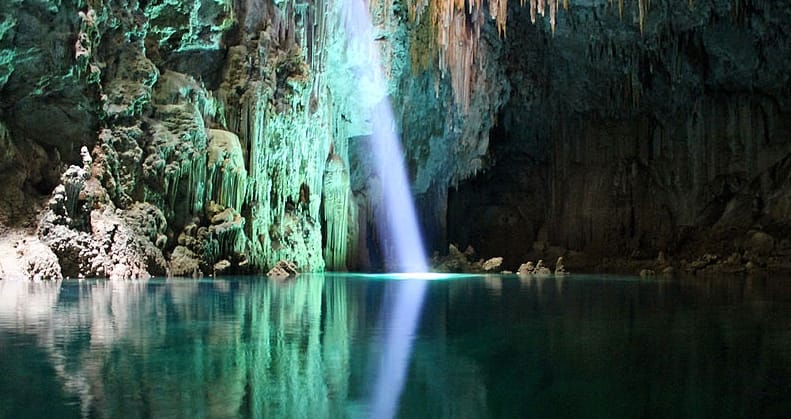
About 20 km West from Bonito other striking natural formations are the Abismo Anhumas (Anhumas Abyss), an underground lake 70 meters below the ceiling of an enchanted cave with underwater stalagmites, (among the biggest in the world, up to almost 20 metres high) and the Gruta do Lago Azul Natural Monument, one of the biggest flooded caves in the world, were prehistoric large mammals fossils of giant sloth, sabre-toothed cat and giant armadillo have been found.
50 km South of Bonito, the Buraco das Araras, a massive sandstone crater, hosts hundreds of aracari toucans and red/green macaws.

Also known as Al-Ḥijr or Hegra, this impressive archaeological site belonged in the first century AD to the kingdom of Nabatean, a nomadic Bedouin tribe of the northern Arabian peninsula, whose capital was Raqmu, now known as the famous Petra (Jordan).
The outstanding location consists of 131 rock-cut monumental tombs and was the first Arabian proclaimed UNESCO World Heritage Site in 2008.
All visitors need a permit to visit Mada’in Saleh (you can easily obtain the permission in the Hotels near the site).